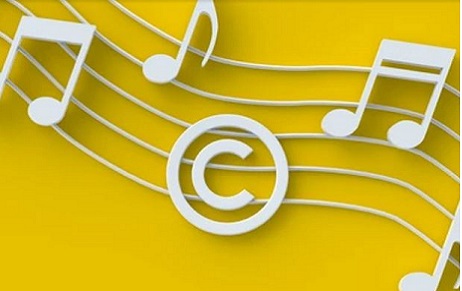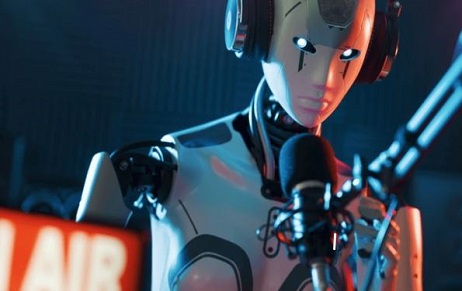Any successful café, restaurant, or retail establishment's environment is greatly influenced by its music. It…
Works In ‘Public Domain’ When Copyright Expires: An Overview
Introduction

Why Copyrights are not indefinitely granted?
The creation of art and creative forms, as well as their pleasure, is thought to be important to human life. Copyrights arose as a difficult balancing act between compensating authors and benefiting public life by making art accessible. As a result, copyrights were never intended to be tools for indefinite monetization and commercialization by the creator, who is only allowed a certain number of years to profit from their work. The Internet’s emergence has also shifted public opinion and had a significant impact on the landscape of copyright concerns. Large online corporations, such as Google and Wikipedia, have become vocal opponents of copyright expansion.
U.S. Scenario
All works published in the United States before 1924 have lost their copyright as of 2019. In other words, if the work was published in the United States before January 1, 1924, you may use it without permission in the United States. Regardless of whether the work was authored by a single author, a collection of authors, or an employee, certain rules and dates apply (a work made for hire). Between 1998 and 2018, no new works entered the public domain as a result of legislation passed in 1998. In 2019, works published in 1923 will no longer be available. Works published in 1924 expired in 2020, and so on.
When the initial Mickey Mouse copyright was about to expire in 1976, the copyright legislation underwent significant revisions. The amendment increased the copyright term for works copyrighted before 1978 to the author’s life plus fifty years after his or her death, and to 75 years for corporate works.
If a work was written by a single author and published after 1977, the copyright will not expire until 70 years after the author’s death. If work was authored by numerous writers and published after 1977, it will not expire until the last surviving author dies, which will be 70 years later. The Copyright Term Extension Act of 1998 (hereafter referred to as “CTEA”), which provided a retroactive extension of the copyright term, modified the duration once again. It extended the duration of protection to the author’s life plus 70 years, and to 120 years after creation or 95 years after publication for works of corporate authorship, whichever comes first. According to the Act, works created after 1923 were not to be released into the public domain until 2019 or later, depending on the date of creation.
Indian Scenario
In India, copyright generally lasts for sixty years after the death of the author or sixty years after the publication of the work, depending on the nature of the content. As a result, when the term expires, the content is released into the public domain. (However, if public domain content is altered, the edited version may not be public domain in some situations. In addition, if a work in the public domain is translated, the translation may not be in the public domain.)Given that copyright is an asset that has evolved into more of a conventional property in terms of its holder’s rights over the last several decades, it is clear that the copyright will pass to the owner’s heirs or legal representatives following the owner’s death. When a legal representative or successor acquires ownership of a copyright, he or she has complete control over the copyright’s rights. Until the protection period expires, he has the right to use it for any monetary gain. However, monetary exploitation such as licensing and assignment must be done in the original author’s name unless the original author has also relinquished his moral rights. As a result, the original author receives proper recognition for his rights for the duration of the copyright protection period.
By virtue of simply being publicly available, or accessible, public information or publicly available content is not considered to fall in the public domain. Reproduction of public information / publicly available information would normally necessitate a license unless (a) the public information was in the public domain under copyright law, (b) the relevant statute explicitly exempted unauthorized reproduction from allegations of infringement, or (c) copyright doctrine allowed for unauthorized reproduction through principles such as fair use (though Indian recognition of the doctrine is debatable) such as scènes à faire or merger, which potentially either deny copyrightability or act as defenses against claims of infringement.
Yash Raj and the FICCI addressed the HRD Ministry in 2008, requesting that the copyright term be extended to 95 years, as it was in the CTEA. The government praised film producers’ suggestions for extending the copyright period under the 2010 Copyright Amendment Act. While Parliament did not agree to extend the duration of copyright to 95 years as it did in the United States, they did modify the law governing film copyright. The modification has made it possible for the producer and the lead director of a film to work together on a project. A principal director’s copyright will be safeguarded for 70 years as a result of the modification, whereas a producer’s copyright would be protected for just 60 years. As a result, the protection period for films has been extended from 60 to 70 years.
Using Works in Public Domain upon expiration: Traps and Pitfalls
When relying on a work’s Public Domain status, double-check that the version you intend to utilize is indeed in the public domain. PD works may be protected by second copyright for later copies or modifications (e.g., translations, revisions, annotated and illustrated editions). Copyright refers to the new layer of original content added by the second author in later copies or adaptations. It is critical to use just the original PD version and not any subsequent copyrighted version that may contain editorial interventions to avoid legal entanglements. The New Folger Library Edition of Hamlet is not in the public domain, unlike Shakespeare’s Hamlet. Remember that many works produced prior to 1923 were altered later (e.g., Dale Carnegie’s Public Speaking, A Practical Course for Business Men (1915)), and that these latter editions are subject to copyright protection and royalty payments. As a result, in the case of a legal issue, you should keep a duplicate of the PD work you referenced or worked from in a safe place.
The following is possibly the most ingenious of all the traps. Even though work is in the public domain in the US, it may still be protected in other nations. For example, a work by a US author that is in PD in the US due to failure to renew may still be protected in countries like Germany, where copyright protection is determined by the date of the author’s death rather than a set period of years. If you want to publish a public domain work in another country, you may need to get permission from the author if he or she died within the last 70 years. If you don’t get permission, you’ll be vulnerable to one or more lawsuits from other countries. In 1996, the GATT and NAFTA international trade treaties restored copyright to many foreign works that had previously been in the public domain due to failure to comply with technical requirements of US law (including copyright notice and renewal requirements). The foreign worker has to be copyrighted in the “original” country and not first published in the United States in order to be recovered. Without the permission of the copyright owner, revived works that are no longer in the public domain cannot be used.
Determining Whether a Work is in the Public Domain
Knowing when copyright expires will enable you to take benefit of the wealth of public domain content. As a result, having a basic understanding of copyright law is beneficial. All works published in the United States before 1923 are in the public domain in the United States, according to one helpful rule of thumb. There are millions of more works that have fallen into the public domain due to (a) failure to renew; or (b) failing to affix an appropriate notice, in addition to pre-1923 works. As previously stated, the period of copyright protection a work obtains in the United States is determined by when it was created.
The Copyright Act of 1976 and the 1988 Berne Convention, the last two major copyright amendments preceding CTEA, had considerable effects on copyright registrations, according to research published in 2003. Another study from 2006 found that nations that increased copyright periods from the author’s life plus fifty years to the author’s life plus seventy years between 1991 and 2002 witnessed a considerable boost in film production. This clearly demonstrates that copyright extension is beneficial to creativity.
In a nutshell,
If you’re looking for works to modify, reuse, or republish in the public domain, be warned that there are numerous traps for the unwary. If you are unfamiliar with the complexities of copyright law, professional assistance is required to fully comprehend the rights associated with works in the public domain. While there are numerous Public Domain gems out there, including classic films and lesser-known works, one should be aware that not everything that glitters is gold. As this article suggests, licenses from both rights holders and identifiable individuals may still be required. As a result, just because something is publicly available does not mean it is in the public domain, regardless of who may have originally owned the copyright or produced it.
Author: Anuja Saraswat – a student of B.A.LL.B (Hons.) from NMIMS Kirit P. Mehta School of Law (Mumbai), in case of any queries please contact/write back to us via email vidushi@khuranaandkhurana.com or contact us at IIPRD.



